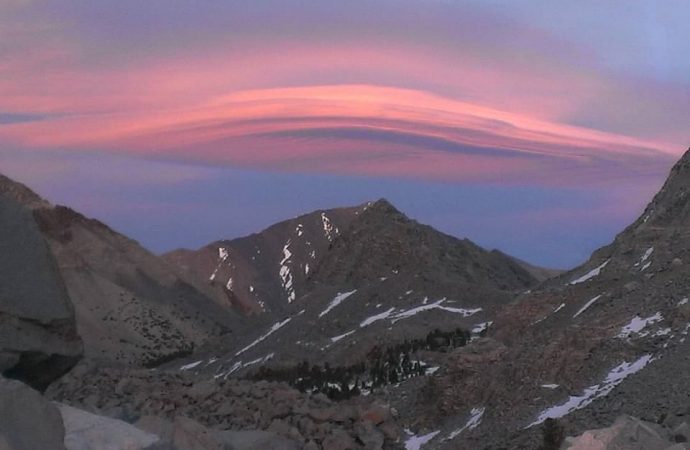Weather can give a spectacular view, but sometimes it gives off something that looks like a UFO.
On the evening of June 9th, a spectacular array of UFO-shaped clouds appeared above California’s Eastern Sierra mountain range. The display was a sensation on social media as people in nearby valleys began posting pictures of the sunset-colored armada. One photographer, unlike the others, was in the mountains; ultrarunner Jeff Kozak of Bishop CA captured this edge-on view from 11,100 feet:
“I was topping out on Morgan Pass at sunset when I looked south to see what I thought was The Mothership hovering over Mt Tom!” says Kozak.
In fact, it was a lenticular cloud. Lenticular clouds form downwind of mountain ranges where the air organizes itself into starship-sized waves. Although they appear stationary, moist air is constantly moving through them, condensing at the apex of the wave. Wind sculpts the clouds into giant saucers and voilà– spaceships in the sky.
Lenticular clouds are mostly found in the lee of hills and mountains. They are good sources of iridescence because the droplets in them have very short lives and have no time to evolve into a range of different sizes..
The clouds stay in the same position but air is rushing through them. When air is forced across a mountain it has to rise and then fall again. Under some atmospheric conditions this induces a whole series of waves downwind of the mountain.
An air pocket rising with one of the waves expands as it climbs because the atmospheric pressure falls with height. The adiabatic expansion causes the air to cool and its water vapour condenses into a host of small, fresh droplets. A few instants later the air starts to descend and the downwind edge of the cloud is reached. The air is compressed as it is forced downwards, it heats up and the droplets evaporate – end of cloud.
Lenticular clouds are thus very dynamic objects marking the crests of atmospheric waves and the boundaries of droplet condensation and evaporation.
Nacreous clouds much higher in the stratosphere are also gravity wave clouds.
Source: Spaceweather.com


![[]](http://www.spaceweather.com/images2016/11jun16/lenticular.png)






























Leave a Comment
You must be logged in to post a comment.